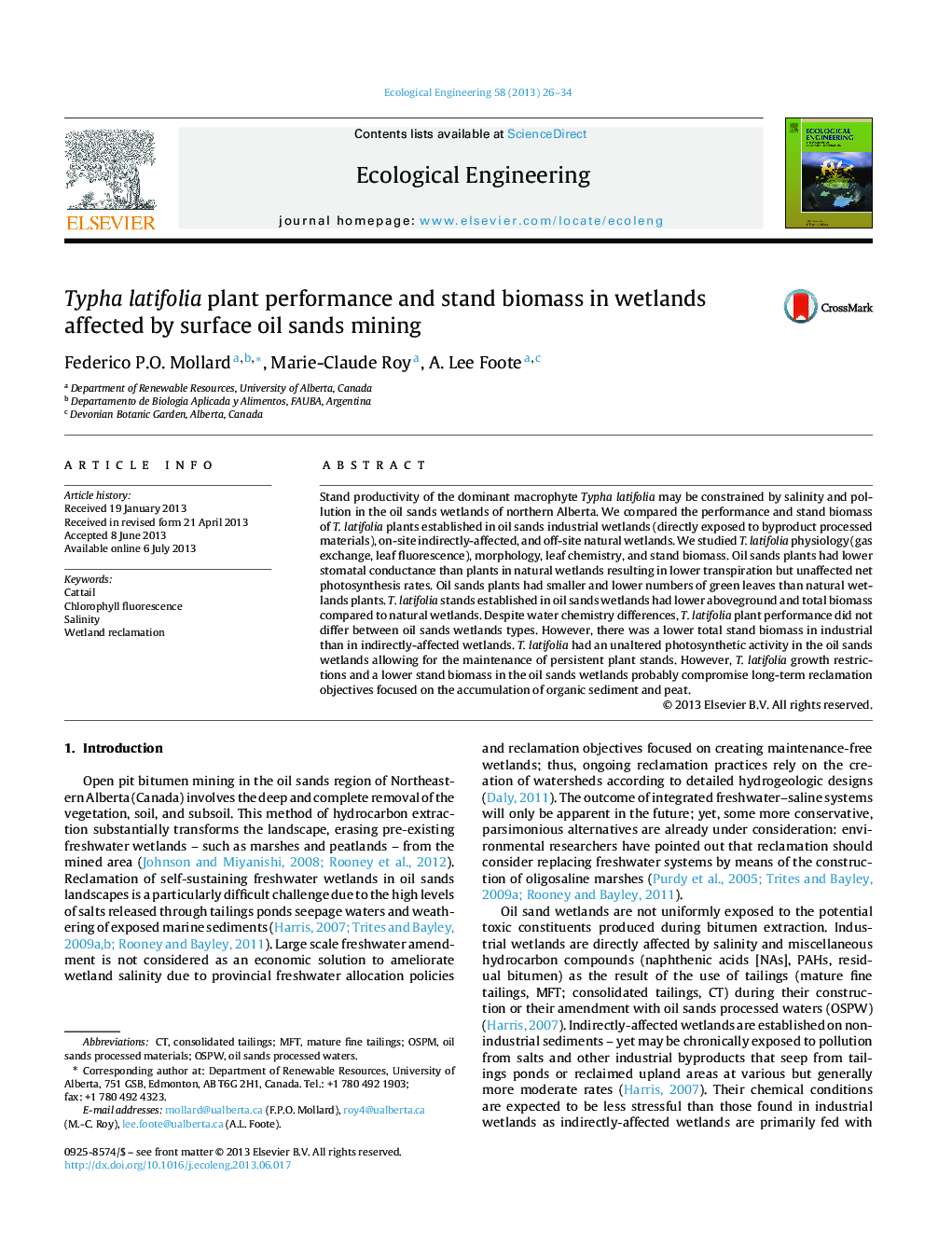| کد مقاله | کد نشریه | سال انتشار | مقاله انگلیسی | نسخه تمام متن |
|---|---|---|---|---|
| 6302468 | 1618040 | 2013 | 9 صفحه PDF | دانلود رایگان |

- Typha latifolia had same C assimilation (leaf level) in oil sands than in natural wetlands.
- Growth and early senescence in oil sands marshes may affect plant C assimilation.
- Restricted stand biomass in oil sands marshes may impair reclamation objectives.
- T. latifolia performance did not differ between oil sands wetlands (plant level).
- Industrial had lower total stand biomass than indirectly-affected oil sands wetlands.
Stand productivity of the dominant macrophyte Typha latifolia may be constrained by salinity and pollution in the oil sands wetlands of northern Alberta. We compared the performance and stand biomass of T. latifolia plants established in oil sands industrial wetlands (directly exposed to byproduct processed materials), on-site indirectly-affected, and off-site natural wetlands. We studied T. latifolia physiology (gas exchange, leaf fluorescence), morphology, leaf chemistry, and stand biomass. Oil sands plants had lower stomatal conductance than plants in natural wetlands resulting in lower transpiration but unaffected net photosynthesis rates. Oil sands plants had smaller and lower numbers of green leaves than natural wetlands plants. T. latifolia stands established in oil sands wetlands had lower aboveground and total biomass compared to natural wetlands. Despite water chemistry differences, T. latifolia plant performance did not differ between oil sands wetlands types. However, there was a lower total stand biomass in industrial than in indirectly-affected wetlands. T. latifolia had an unaltered photosynthetic activity in the oil sands wetlands allowing for the maintenance of persistent plant stands. However, T. latifolia growth restrictions and a lower stand biomass in the oil sands wetlands probably compromise long-term reclamation objectives focused on the accumulation of organic sediment and peat.
Journal: Ecological Engineering - Volume 58, September 2013, Pages 26-34